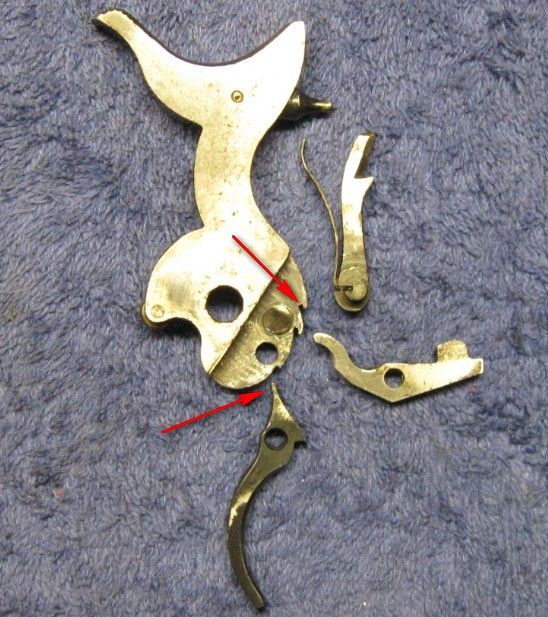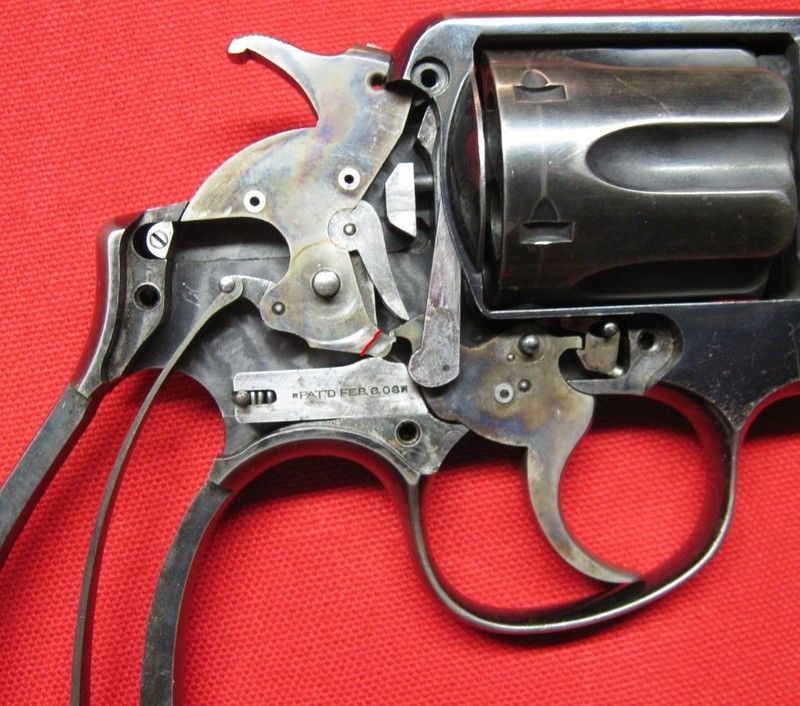Lastly, an important safety note: Pre-1918 Smith & Wessons such as this one do NOT incorporate a positive hammer block or a transfer bar. There is a rebounding hammer mechanism, but it is NOT adequate to prevent an accidental discharge if the revolver is dropped and the hammer spur strikes a hard surface. To positively prevent it from firing if dropped, the revolver should be carried "five-up" with an empty chamber under the hammer. Only load all six chambers if you plan to fire them all immediately.
Howdy
I have to comment on this. I hear it all the time, and I believe it is a bit overblown.
In the 19th Century it was well known that most single action revolvers such as the Colt Single Action Army were not safe to carry fully loaded with a live round under the hammer. This is because the so called 'safety cock' notch on the hammer was narrow, but more importantly, the sear, or tip of the trigger that engaged the 'safety cock' notch was very thin and fragile. It did not take much of a blow to the hammer spur to shear off the sear. This meant that a Colt dropped on its hammer was very likely to discharge. This was well known by shooters familiar with the SAA and other single action revolvers, so it was common practice to only 'load five beans in the cylinder' and leave the hammer down on an empty chamber. If one knew one was going to be imminently engaged in a gun fight, one would load all six, otherwise it was common to carry these revolvers with the hammer down on an empty chamber.
In this photo of the lockparts of a SAA, the lower arrow is pointing to the sear, the upper arrow is pointing to the 'safety cock' notch, with its overhanging lip. It did not take much of a blow to shear either one.
Because the weaknesses of 'safety cock' notch on the hammers of most single action revolvers was well known, double action revolver manufacturers went to considerable trouble to make the designs safer.
This is a photo of a pre-hammer block S&W 38. The part directly under the hammer is called the rebound slide, and it has been part of S&W designs for well over 100 years. When the rebound slide is all the way forward, the hump on the top wedges the hammer back, pulling the firing pin back away from a round under the hammer. Yes, it is true that accidents did happen with this design, including the well documented ship board accident in 1944 when S&W designed the current style of hammer block, the third such design. But just look at the cross sections of the parts and compare them to the Colt parts. There are three ways this design could fail and the gun could discharge if the hammer received a stout blow.
1. The lower part of the hammer could shear off, where I drew the red line.
2. The rebound slide could be crushed, shoving the hump down into the hollow rebound slide.
3. The stud the hammer rotates on could shear.
I submit these old Smiths without hammer blocks are not as unsafe as many modern shooters imply. Just look at the cross section of the parts involved. They are much more robust than the single action parts. Yes, caution should always be used with loaded firearms, but I have never heard of policeman only carrying five rounds in these old revolvers for fear of a discharge if the gun landed on its hammer.
Just my humble opinion that they are not quite as unsafe as is often implied.


